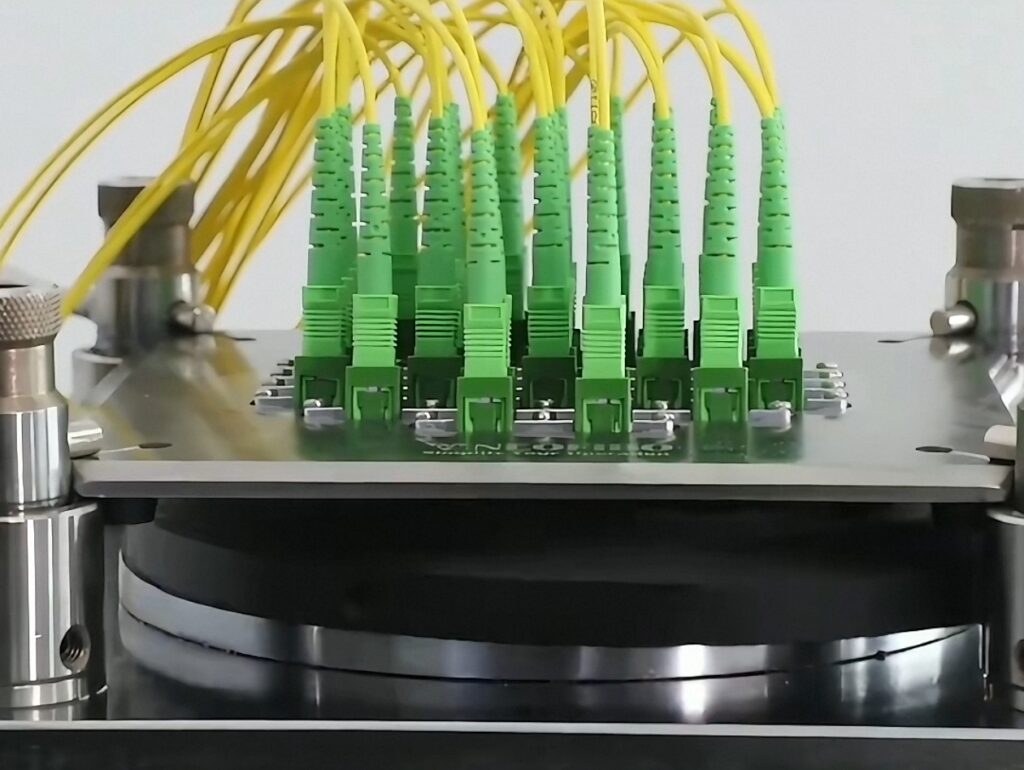When performing fiber optic splicing in dusty environments, dust prevention is crucial, but several other factors also play a significant role in determining end face quality. These factors directly impact splicing results and overall fiber optic transmission performance. Let’s explore them in detail, along with practical countermeasures.
1. Flatness of the Fiber Optic End Face
The flatness of the fiber optic end face is a foundational factor influencing splicing quality and optical signal transmission efficiency. An uneven end face can lead to increased signal reflection and loss, undermining the integrity of the connection.
How to ensure end-face flatness:
- Use high-quality fiber optic cutting tools. Investing in reliable tools helps guarantee proper cutting angles and consistent end-face quality.
- Clean the end face immediately after cutting. This step prevents dust from adhering to the freshly cut surface, which could compromise its flatness.
2. Fiber Optic End-Face Cleanliness
Cleanliness is non-negotiable when it comes to fiber optic end faces. Contaminants like dust, grease, or oils can cause significant light signal reflection and loss, degrading transmission performance.
Tips for maintaining end-face cleanliness:
- Use a lint-free cloth or fiber optic cleaning pen dipped in high-purity alcohol to wipe the end face. This ensures thorough removal of contaminants without leaving residue.
- Inspect after cleaning. After each wipe, check the end face using a fusion splicer or fiber optic microscope to confirm it’s free of debris.
3. Fiber Optic End Face Grinding Quality
Grinding is a critical process in fiber optic manufacturing and connection. It involves precision machining of the end face (using mechanical or thermal methods) to remove unevenness, creating a smooth, flat surface that enhances connection reliability and performance. Poor grinding can result in unevenness, scratches, or other defects that harm performance.
Measures to ensure grinding quality:
- Use a stable grinding machine. Ensure it’s set with appropriate grinding pressure and time to avoid over- or under-processing.
- Maintain polishing discs. Regularly check for wear and replace them promptly to prevent inconsistent grinding results.
- Test the polished end face. After grinding, use specialized equipment (e.g., an end-face inspection instrument) to verify that the end face meets quality standards.
4. Protection of Fiber Optic End Faces
In dusty environments, protecting end faces from contamination is especially vital. Beyond using standard dust caps, additional steps can minimize exposure and damage.
Key protection strategies:
- Splice immediately after cleaning. Reducing the time the end face is exposed to the environment lowers the risk of dust accumulation.
- Shield the work area. Use fiber optic protective sleeves or dust covers to create a barrier against airborne particles during splicing.
By addressing these factors—flatness, cleanliness, grinding quality, and protection—you can significantly improve fiber optic end face quality in dusty environments, ensuring reliable splicing and optimal transmission performance.
